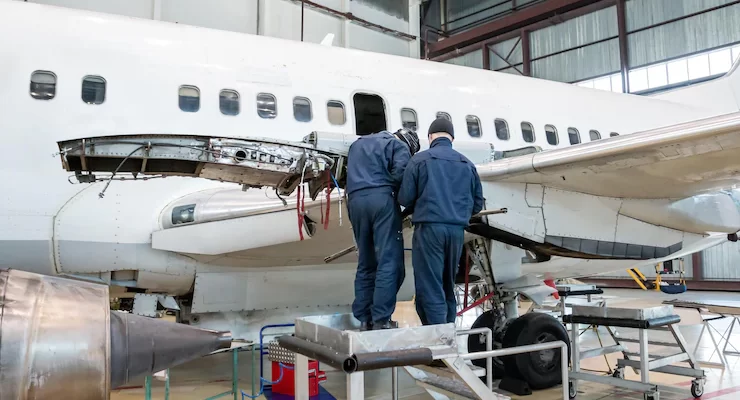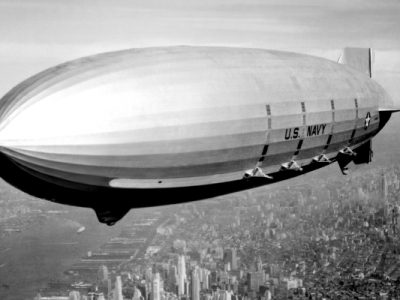The development of aircraft maintenance is a monument to human ingenuity in the fast-paced world of aviation, where innovation is key and safety is important. Modern airplane repair stands have metamorphosed, adapting meticulously to the intricate designs and complexities of contemporary flying machines. This evolution is a story of resilience, efficiency, and flexibility; it is not simply about ease. How these stands have seamlessly integrated into the modern aviation landscape, ensuring not only the smooth functioning of aircraft but also the safety of the skilled technicians who service them, unveils a fascinating tale of progress and precision.
The Origins Of Airplane Repair Stands
Airplane repair stands have a rich history, evolving from rudimentary structures to complex, multifunctional systems. In the early days of aviation, mechanics often relied on makeshift platforms, risking their safety to service aircraft. But, as aviation technology advanced, there was a greater demand for safer and more effective maintenance procedures.
The Advent Of Specialized Aircraft Maintenance Equipment
In the mid-20th century, the aviation industry witnessed a transformative shift with the advent of specialized aircraft maintenance equipment. This pivotal era marked a departure from rudimentary tools to sophisticated, purpose-built solutions tailored to the intricacies of aircraft maintenance.
Mechanics, once reliant on manual methods, now had access to hydraulically powered stands with adjustable features, enabling them to reach inaccessible parts of the aircraft efficiently. This technological leap elevated the safety standards of maintenance procedures and significantly enhanced precision and productivity. The integration of specialized equipment ushered in an era of streamlined maintenance processes, enabling aviation professionals to uphold rigorous safety standards and adhere to the stringent regulations that govern the industry.
Technological Advancements In Airplane Repair Stands
In recent decades, technological advancements have reshaped the landscape of airplane repair stands. The integration of cutting-edge materials, such as lightweight alloys and advanced composites, has significantly reduced the overall weight of the stands without compromising their structural integrity, enhancing portability and maneuverability for technicians.
Moreover, the incorporation of digital interfaces and automation has streamlined maintenance processes. These stands now have intuitive touchscreens and sensors, allowing for precise adjustments and real-time monitoring of various parameters. The utilization of hydraulic and pneumatic systems has made height adjustments seamless, enabling mechanics to access different parts of the aircraft with unprecedented ease.
Ergonomic Considerations In Modern Airplane Repair Stands
Modern aircraft maintenance stands have evolved significantly in response to ergonomic considerations, with a keen focus on the physical comfort and safety of the technicians. These stands are meticulously designed, taking into account the human body’s natural movements and limitations during tasks. Adjustable heights, strategically placed grips, and anti-fatigue materials have become standard features, allowing mechanics to work for extended periods without excessive strain. The surfaces are designed to be slip-resistant, ensuring stable footing even in challenging environments.
Sustainability And Environmental Impact
In recent years, the aviation industry’s focus on sustainability has led to substantial advancements in designing and producing airplane repair stands. Manufacturers increasingly incorporate eco-friendly materials, such as recyclable alloys and biodegradable composites, in constructing these stands. Additionally, there is a notable emphasis on energy efficiency, with the integration of solar-powered components and smart energy management systems, reducing the overall carbon footprint of maintenance operations.
Upcoming Trends And Difficulties
Utilizing cutting-edge tools like artificial intelligence and machine learning to estimate maintenance needs effectively is one significant development. This predictive approach enhances efficiency and minimizes downtime, which is crucial for airlines operating on tight schedules. Additionally, the industry is leaning towards more sustainable practices, exploring eco-friendly materials and energy-efficient designs for maintenance stands, aligning with the global push for environmental conservation. However, alongside these promising advancements, there are challenges to overcome.
Conclusion
From humble makeshift platforms to sophisticated, technology-infused structures, these stands have journeyed alongside the soaring advancements of modern aircraft. Today, they stand as silent sentinels, embodying decades of innovation, safety, and precision. As aviation technology continues its relentless march forward, the evolution of these maintenance stands remains a crucial narrative, ensuring that the intricate ballet of maintenance and flight, with all its complexities, unfolds seamlessly.
Additionals:
















